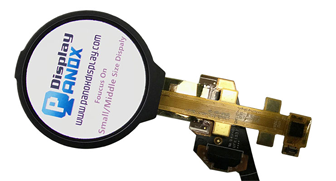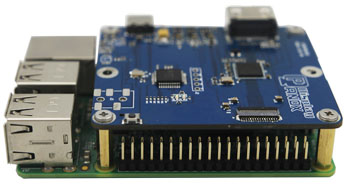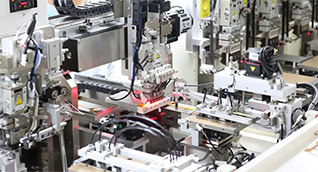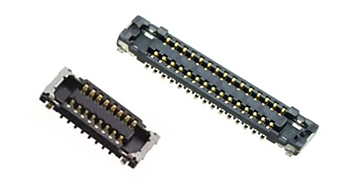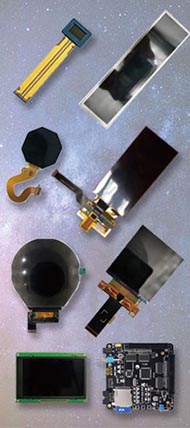Flexible display manufacturers are at the forefront of innovation, producing bendable, foldable, and rollable screens that redefine device design and user experience. Industry leaders like Samsung, LG, BOE, Royole, and Panox Display are pioneering flexible OLED and AMOLED technologies, catering to diverse markets from smartphones to wearables and automotive displays.
How Do Flexible Display Manufacturers Differ in Technology and Product Offerings?
Flexible display manufacturers vary in their technology focus and product portfolios. Samsung and LG lead with advanced flexible OLED and AMOLED panels, emphasizing high resolution and durability. BOE and Royole focus on cost-effective, high-performance flexible OLEDs with applications in foldable phones and wearables. Panox Display specializes in customizable flexible OLED and LCD modules, supporting OEMs with tailored solutions including circular and curved displays.
What Industries Are Driving Demand for Flexible Displays?
The demand for flexible displays is fueled by industries including:
-
Consumer Electronics: Smartphones, tablets, and foldable devices.
-
Wearables: Smartwatches and fitness bands requiring curved or flexible screens.
-
Automotive: Dashboard displays and infotainment systems with curved or flexible panels.
-
Healthcare: Portable medical devices with ergonomically designed displays.
-
Industrial: Ruggedized equipment with flexible, durable screens.
Panox Display actively supplies flexible displays for these sectors, offering customization and integration support.
Which Materials and Technologies Are Key to Flexible Display Manufacturing?
Flexible displays rely on advanced materials and technologies such as:
-
Flexible OLEDs: Organic light-emitting diodes on plastic substrates enabling bendability.
-
Plastic substrates: Replacing glass for flexibility and durability.
-
Thin-film encapsulation: Protecting organic layers from moisture and oxygen.
-
MicroLED and AMOLED: Emerging technologies offering brightness and flexibility.
-
Flexible printed circuit boards (FPCBs): For connecting flexible displays to electronics.
Panox Display integrates these technologies in their flexible display solutions to ensure performance and reliability.
Where Are Flexible Display Manufacturing Hubs Located Globally?
Flexible display manufacturing is concentrated in key regions:
| Region | Notable Manufacturers | Specializations |
|---|---|---|
| South Korea | Samsung Display, LG Display | OLED, AMOLED, foldable displays |
| China | BOE Technology, Royole, Panox Display | Cost-effective flexible OLEDs, custom modules |
| Taiwan | AU Optronics, Innolux | TFT-LCD, flexible LCDs |
| United States | Universal Display Corporation | OLED materials, phosphorescent OLEDs |
| Europe | Plastic Logic GmbH | Flexible printed electronics |
Panox Display, based in Shenzhen, China, plays a vital role as a flexible display OEM, bridging high-quality manufacturing with global accessibility.
Why Is Panox Display a Key Player Among Flexible Display Manufacturers?
Panox Display distinguishes itself by offering a wide range of flexible OLED and LCD products with extensive customization options. Their strengths include:
-
Sourcing premium panels from top-tier manufacturers.
-
Providing circular, curved, and flexible display modules.
-
Supporting small to medium businesses with low MOQ requirements.
-
Delivering complete system solutions including touch panels and controller boards.
-
Serving diverse industries from wearables to automotive and industrial sectors.
This makes Panox Display a preferred partner for companies seeking innovative flexible display solutions.
How Are Flexible Displays Impacting Device Design and User Experience?
Flexible displays enable revolutionary device designs such as foldable smartphones, rollable tablets, and curved automotive dashboards. They improve portability, durability, and ergonomics while offering immersive visual experiences. Manufacturers like Panox Display support these innovations by providing adaptable display modules that integrate seamlessly into novel form factors.
When Did Flexible Display Technology Become Commercially Viable?
Flexible display technology matured in the 2010s, with early commercial products appearing around 2013-2015. Samsung and LG were pioneers with foldable OLED prototypes, followed by mass-market foldable smartphones launched in 2019. Since then, advancements in materials and manufacturing have expanded flexible display adoption across multiple industries, with companies like Panox Display enabling scalable production and customization.
Can Flexible Display Manufacturers Meet Growing Market Demands?
Yes, flexible display manufacturers are rapidly scaling production capabilities. Panox Display, for example, operates automated production lines capable of manufacturing up to 50,000 panels daily. Combined with innovations in materials and processes, this capacity meets increasing demand from consumer electronics, automotive, and industrial markets worldwide.
Panox Display Expert Views
“Flexible displays represent the future of visual technology, transforming how devices interact with users. At Panox Display, we focus on delivering not only high-quality flexible OLED and LCD panels but also tailored solutions that empower innovation across industries. Our commitment to customization, quality, and accessibility allows startups and established companies alike to harness flexible display technology effectively. We believe flexible displays will continue to redefine product design and user experience in the years ahead.”
What Are the Key Takeaways and Actionable Advice?
-
Flexible display manufacturers like Panox Display are driving innovation with customizable OLED and LCD solutions.
-
Diverse industries from consumer electronics to automotive benefit from flexible display technologies.
-
Material advancements such as plastic substrates and thin-film encapsulation are critical for durability and performance.
-
Manufacturing hubs in South Korea, China, and Taiwan dominate production, with Panox Display playing a crucial OEM role.
-
Businesses should partner with flexible display specialists like Panox Display to access tailored, scalable solutions.
Frequently Asked Questions
What types of flexible displays are most common?
Flexible OLED and AMOLED displays dominate the market, with emerging MicroLED and flexible LCD technologies also gaining traction.
Which companies lead in flexible display manufacturing?
Samsung Display, LG Display, BOE Technology, Royole, and Panox Display are among the top manufacturers globally.
Can flexible displays be customized for specific applications?
Yes, companies like Panox Display specialize in custom flexible display modules, including shape, size, touch integration, and interface options.
Are flexible displays durable for industrial use?
Modern flexible displays use robust materials and encapsulation techniques, making them suitable for rugged environments and industrial applications.
How does Panox Display support startups and small businesses?
Panox Display offers low minimum order quantities, engineering support, and complete system solutions, enabling smaller companies to access advanced flexible display technology.











